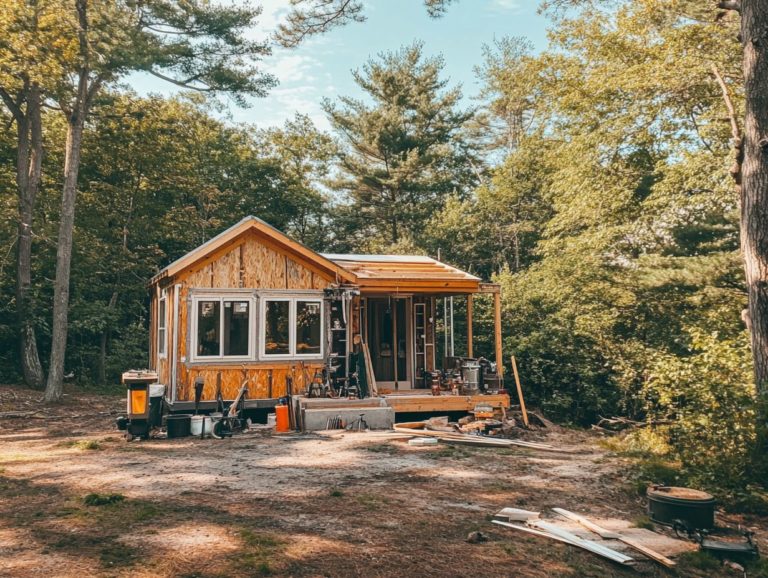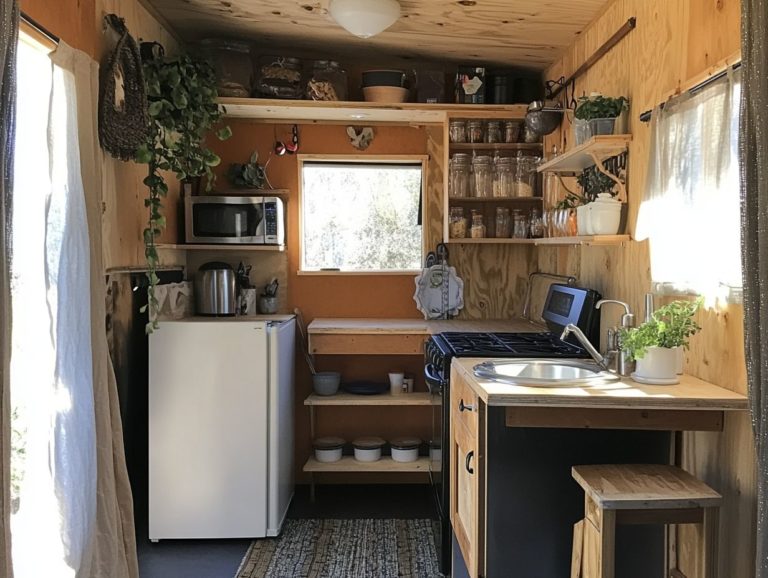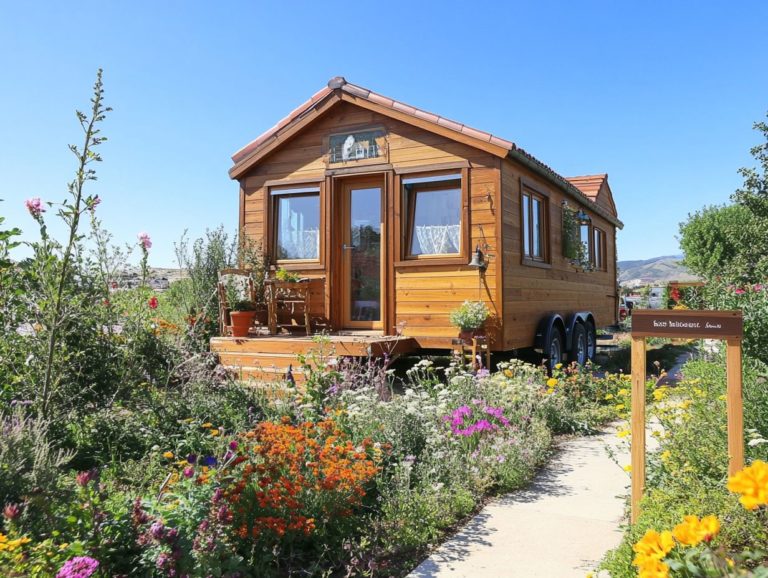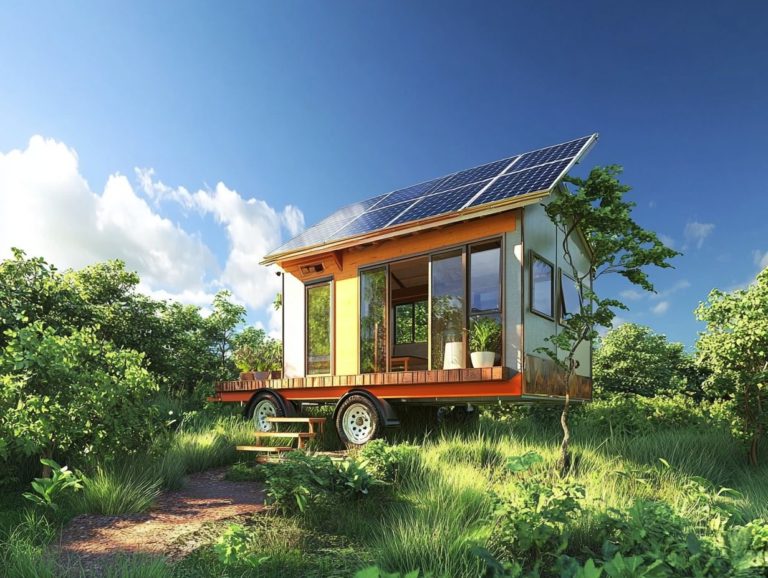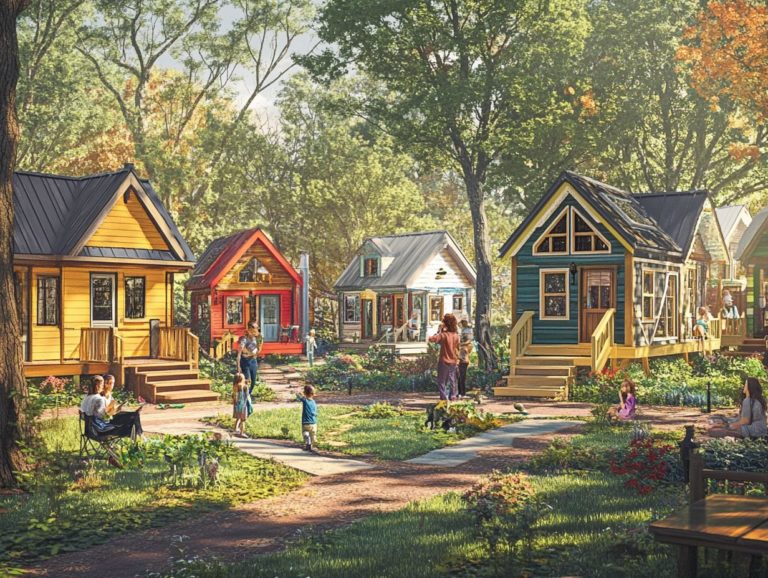How to Transition to Tiny House Living?
Are you ready to discover the exciting world of tiny houses? This article delves into the essence of tiny house living and reveals why it has enchanted so many individuals. Let’s explore the various benefits of living cheaply!
The advantages are compelling. They range from substantial financial savings and a smaller environmental footprint to embracing a minimalist lifestyle.
However, transitioning to this way of life is not without its challenges. You’ll want to carefully assess your personal needs and navigate the legal requirements while taking practical steps to facilitate this lifestyle change.
Are you prepared to downsize and simplify? Let s embark on this journey together!
Contents [hide]
- Key Takeaways:
- Benefits of Transitioning to Tiny House Living
- Considerations Before Transitioning
- Steps to Transition to Tiny House Living
- Adjusting to a Smaller Living Space
- Frequently Asked Questions
- What is tiny house living and how do I transition to it?
- What are the benefits of transitioning to tiny house living?
- How do I choose the right tiny house for me?
- What are some challenges I may face when transitioning to tiny house living?
- How do I manage my belongings and storage in a tiny house?
- Are there any legal considerations when transitioning to tiny house living?
Key Takeaways:
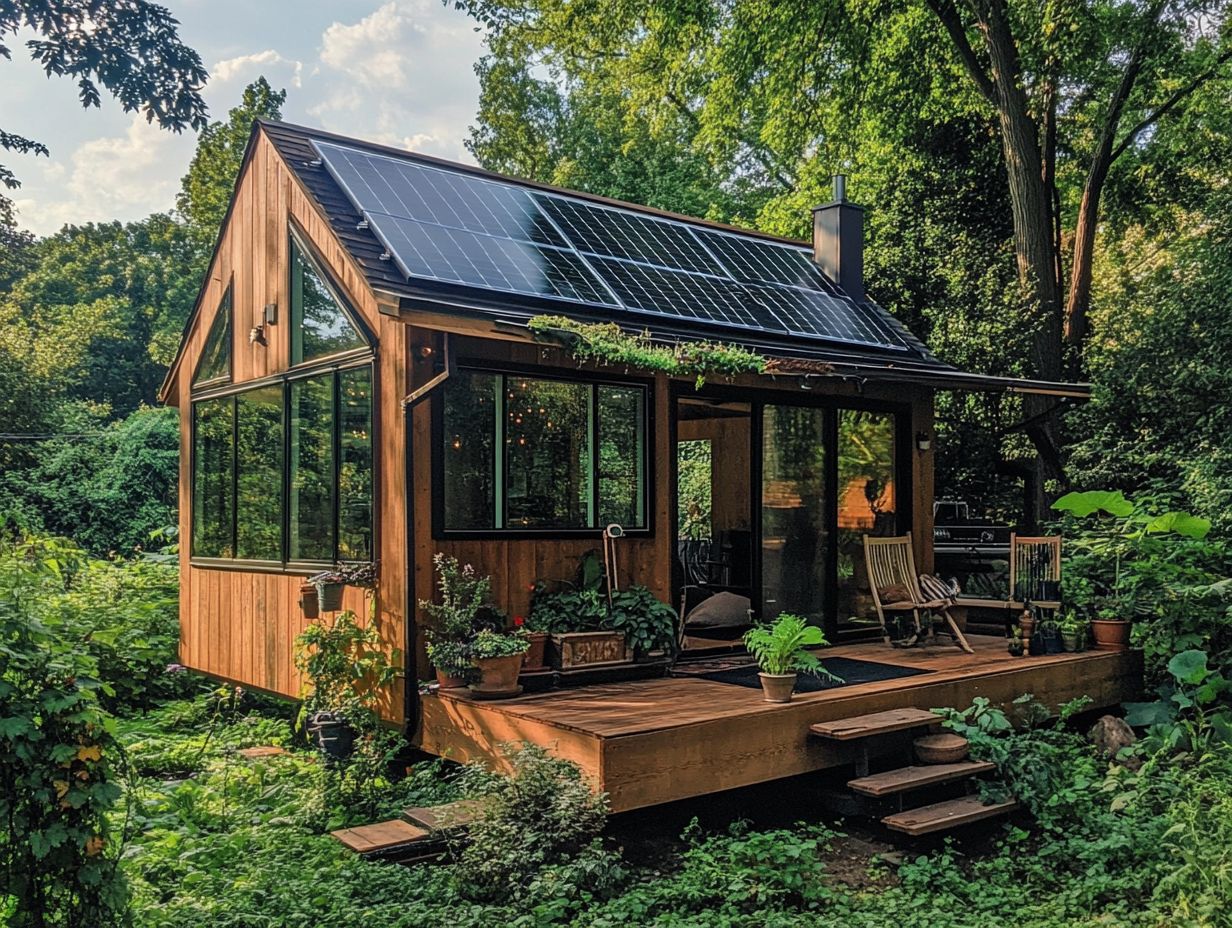
- Transitioning to tiny house living can bring financial savings through reduced living expenses and a simpler, more intentional lifestyle.
- It’s important to carefully assess your personal needs, preferences, and local laws before making the transition to tiny house living.
- The key steps to successfully transition to tiny house living include planning and designing your space with efficient house plans, decluttering and downsizing, and adjusting to a smaller living space.
What is a Tiny House?
A tiny house is a compact dwelling, typically under 400 square feet, crafted for efficient living. It embodies the principles of the tiny house movement, which champions minimalism, sustainability, and a reduced environmental impact.
Definition
These homes can be stationary or mobile, often built on trailers. This makes them a popular choice in tiny house communities and as additional small homes on a property.
Movement Origins
Emerging in the early 2000s, the tiny house movement arose as a response to soaring housing costs and a yearning for sustainable living. Enthusiasts celebrate various styles, from custom-built homes to mobile options tailored to fit diverse needs and personal preferences.
Design Features
These compact dwellings often prioritize eco-friendly materials and energy-efficient designs. This enables you to significantly cut down on utility expenses and waste, which is a major advantage of the tiny house lifestyle.
By adopting this lifestyle, you can experience freedom from the clutter and chaos of conventional living. This fosters a deeper connection with your surroundings and promotes a simpler, more intentional existence.
Benefits of Transitioning to Tiny House Living
Transitioning to tiny house living offers an array of compelling benefits for those eager to downsize and simplify their lives. This lifestyle choice allows for significant financial savings on housing costs while encouraging a reduced environmental footprint through eco-friendly practices.
Embracing a minimalist lifestyle shifts your focus from material possessions to enriching experiences. You may enjoy enhanced freedom and flexibility in your daily routine, all while being part of a vibrant tiny house community that shares your values.
Start your journey today and explore the various tiny house options available to you!
Financial Savings
One of the most compelling reasons to consider tiny house living is the potential for significant financial savings. The average cost of a tiny home is substantially lower than that of traditional houses, allowing you to live more affordably and enjoy a sense of financial freedom.
By minimizing expenses on home construction, utilities, and maintenance, you can redirect those funds toward experiences, travel, or investments, fundamentally transforming your financial landscape. With effective budget planning, you can amplify these savings even further.
The initial costs associated with tiny homes, such as land purchase or rental fees, tend to be much lower than what you would encounter with larger properties. You’ll also benefit from reduced utility bills thanks to the smaller square footage, leading to significant savings on heating, cooling, and water usage.
Smart budgeting for maintenance will make tiny living even more attractive! Various financing options specifically cater to tiny homes, featuring specialized loans from credit unions and online lenders, as well as grants aimed at promoting sustainable living.
Alternative funding methods like crowdfunding or joining tiny house cooperatives can further alleviate the financial burden, making this lifestyle both accessible and enticing.
Environmental Impact
The tiny house movement is intricately tied to sustainable living principles, presenting a compelling solution for you to reduce your environmental impact. By embracing energy efficiency and eco-friendly practices, tiny houses allow you to consume fewer resources and require less energy for heating and cooling.
These homes have a much smaller carbon footprint and are often constructed with sustainable materials, making them appealing options among housing choices in today s market. According to the U.S. Department of Energy, regular homes use about 88 million units of energy each year. In contrast, tiny houses typically operate on just 15,000 to 50,000 BTUs annually, which measures energy usage, highlighting a remarkable reduction in energy use.
Moreover, by minimizing waste, tiny homes can substantially decrease landfill contributions, with estimates suggesting that downsizing can lead to an impressive waste reduction of up to 80%.
Integrating eco-friendly technologies like solar panels, composting toilets, and rainwater harvesting systems actively contributes to a sustainable future, inspiring many to adopt a greener lifestyle.
Minimalist Lifestyle
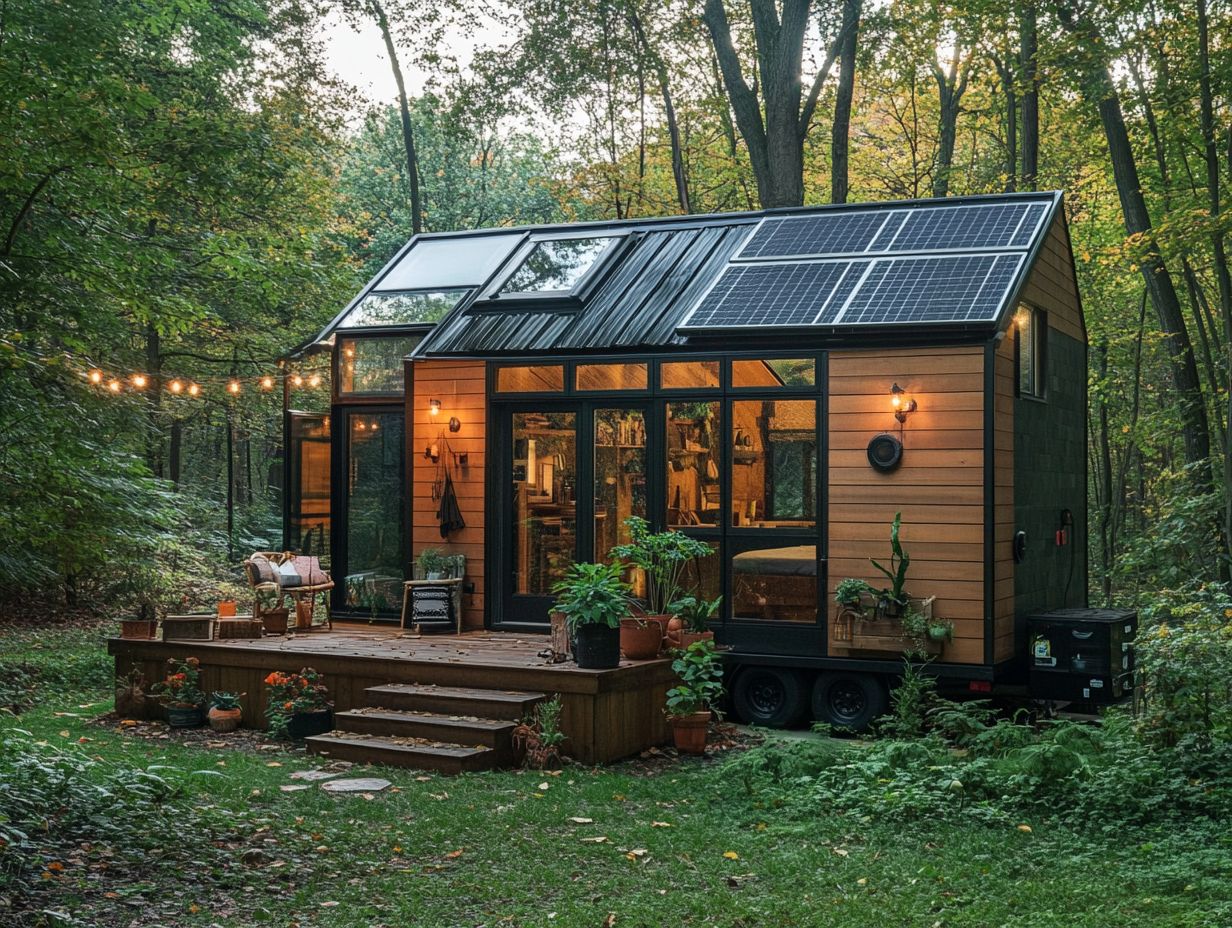
Embracing a minimalist lifestyle lies at the heart of tiny house living, inviting you to downsize your possessions and optimize your living space. This ultimately leads to a more meaningful and intentional way of life, as seen in many custom homes tailored for this purpose.
Tiny homes are crafted with space-saving features and innovative storage solutions, allowing you to keep only what truly matters, fostering a sense of freedom and clarity. This approach gives you the power to prioritize experiences over material possessions and embrace the beauty of simplicity.
As you reduce clutter, you may find a remarkable boost in your mental well-being. A clean and organized space can diminish anxiety and ignite your creativity.
Downsizing doesn t have to be overwhelming start with a thorough assessment of your belongings to pinpoint the items that are no longer essential or cherished. Consider clever design ideas like multi-functional furniture and built-in shelving, which not only maximize your limited square footage but also create an inviting atmosphere.
Incorporating elements such as natural light and outdoor spaces enhances the overall ambiance, fostering a harmonious connection with nature while reinforcing the philosophy of minimalism. Explore the freedom of minimalist living!
Considerations Before Transitioning
Before diving into tiny house living, reflecting on key factors is essential. Start by evaluating your personal needs and preferences. Also, consider the legal and zoning aspects that could affect your housing choice.
Many drawn to the tiny house movement aspire to join a vibrant tiny house community or find the perfect land for their new home. However, it’s important to recognize that legal restrictions and tiny house regulations vary widely by location, making thorough research essential. For those considering this lifestyle, understanding what to expect when going tiny is crucial.
Assessing Personal Needs and Preferences
Assessing your personal needs and preferences is crucial in transitioning to tiny house living. This defines the essential features your new space needs to align with your lifestyle.
Factors such as family size, remote work requirements, and lifestyle choices shape the design and functionality of your tiny home. This thoughtful self-assessment leads to a tailored living experience that maximizes comfort and efficiency.
Think about the features that will transform your daily life. If remote work is a priority, envision a workspace that boosts productivity while fitting seamlessly into your compact layout. Smart storage solutions should keep your environment organized, allowing easy access to your belongings without clutter.
Don’t underestimate the importance of outdoor living spaces. A cozy patio or garden can enhance your quality of life, providing inviting spots for relaxation and socializing. By evaluating these components, you can design a tiny home that reflects your personal needs and aspirations.
Legal and Zoning Considerations
Understanding legal and zoning considerations is vital when transitioning to tiny house living. Tiny house laws significantly influence where and how you can establish your home.
Many regions have specific zoning rules that determine whether tiny homes can be placed on private property, in tiny house communities, or RV parks. Being aware of these regulations can save you from future legal headaches.
Explore the necessary permits and regulations for setting up mobile homes or small homes added to existing properties. Each area has distinct guidelines that often dictate the size, design, and placement of these structures.
For those considering tiny houses, understanding legal parking requirements is equally crucial for compliance with local laws. Numerous online resources and local government offices can provide detailed information and assistance.
By actively addressing these zoning issues, you pave the way for a smoother transition into a more minimalist lifestyle. Check your local regulations today to avoid future issues!
Steps to Transition to Tiny House Living
Transitioning to tiny house living involves essential steps, starting with meticulous planning and design to ensure your tiny house aligns with your lifestyle and preferences while adhering to building codes.
From choosing the ideal building materials to exploring various tiny house kits, every detail is crucial for a successful shift toward a minimalist lifestyle. This journey requires thoughtful consideration and precise execution to create a space that is both functional and inviting. Additionally, transforming your mindset for tiny house living can greatly enhance this experience.
Planning and Designing Your Tiny House
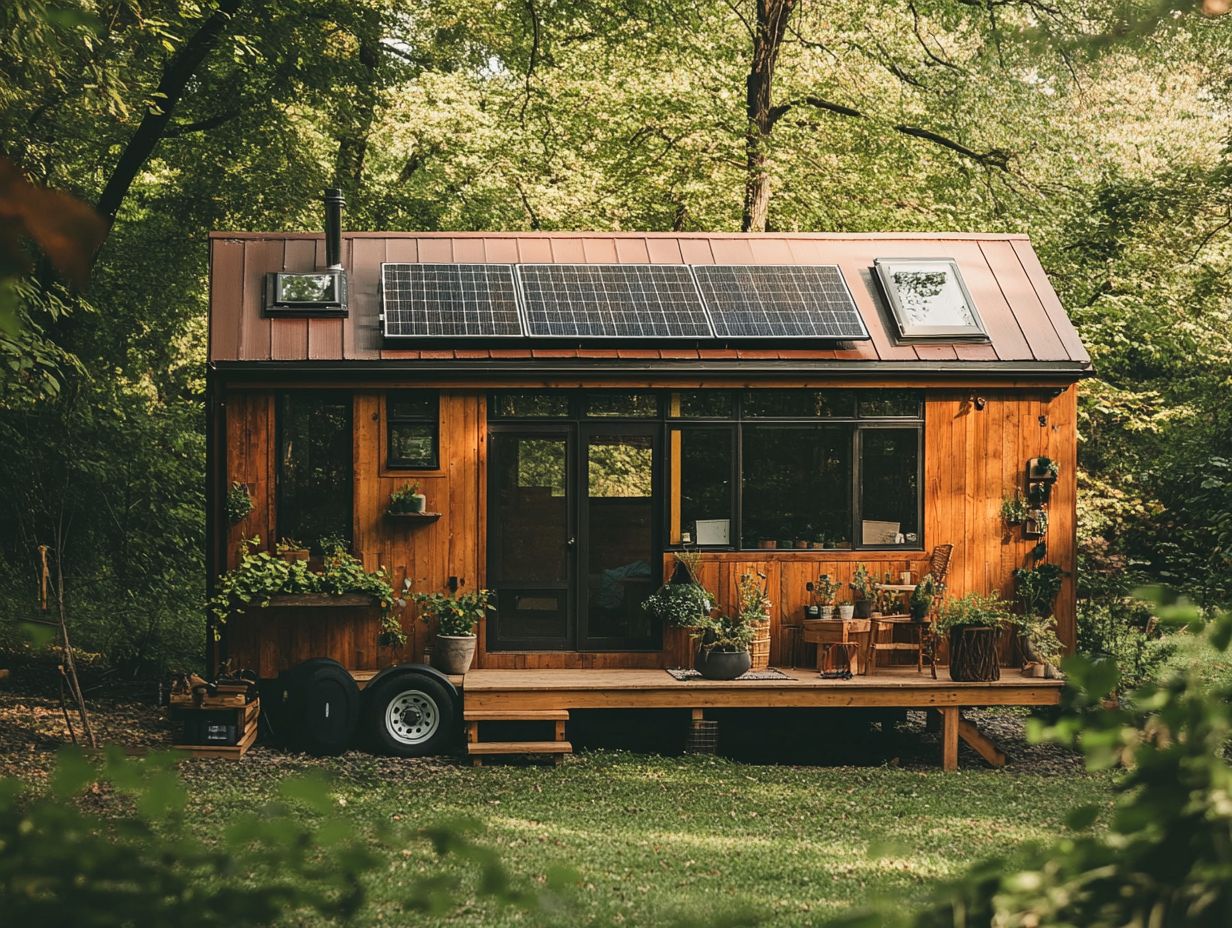
Effective planning and designing of your tiny house is crucial for maximizing space and functionality. It should also reflect your personal style and needs.
Explore various tiny house models and floor plans. This stage often involves considering custom homes tailored to your specific preferences, ensuring that every inch of your living space is utilized wisely and efficiently.
Design isn t just about looks; it affects how you interact with your space. Open floor plans seamlessly integrate the kitchen and living areas, creating a sense of spaciousness and encouraging social interactions.
Incorporating furniture that serves more than one purpose like a sofa bed or a foldable dining table can greatly enhance versatility.
Popular layouts, such as the lofted bedroom model, provide sleeping space above while maintaining a cozy living area below. By weaving in clever storage options and smart design features, you can strike a harmonious balance between aesthetics and everyday functionality, ensuring that your tiny home feels comfortable and uniquely personalized.
Downsizing and Decluttering
Downsizing and decluttering are essential steps in your transition to tiny house living. This journey demands a thoughtful approach to streamline your possessions and elevate your living space.
This process involves making tough decisions about what to keep and what to let go, ultimately leading to a more organized lifestyle that resonates with the values of the tiny house movement.
As you embark on this path toward minimalism, it’s vital to recognize the emotional and functional significance of each item you own. Practical tips can guide you in sorting your belongings into categories like essential, sentimental, and duplicate.
Incorporating clever storage options, such as vertical shelving and multi-functional furniture, will help you maximize your living space effectively.
Tiny homes often showcase ingenious designs, like foldable tables or hidden compartments, that enhance both aesthetics and usability. By reflecting on your personal items, you can curate a living space that truly mirrors your priorities, fostering a peaceful and intentional environment. To learn more, check out the essentials of tiny house living.
Building or Buying a Tiny House
Deciding whether to build or buy a tiny house involves careful consideration of various options, including the appeal of tiny house kits and the charm of custom homes designed to meet your unique preferences.
Each choice carries its own set of advantages and challenges, and this decision can greatly influence your overall tiny house experience, from the construction phase to your long-term satisfaction with your living space.
When you think about this lifestyle change, it s essential to weigh not just the financial aspects but also the timeline for completion. Building a tiny home from scratch often demands a longer commitment and may require specialized DIY skills.
On the other hand, purchasing a pre-built option offers the convenience of immediate habitation no waiting around for construction to wrap up.
The cost landscape can vary significantly; tiny house kits might provide a more affordable middle ground, but be prepared for potential additional expenses in tools or labor. Fortunately, numerous online platforms offer a wealth of resources, including instructional videos and forums, making it easy for both seasoned builders and first-timers to access the guidance they need on understanding the tiny house movement.
If you prefer a more hassle-free approach, turning to reputable tiny home builders can ensure you receive quality craftsmanship while adhering to zoning regulations and building codes. Exploring a mix of these options allows you to discover the joys of a tiny house lifestyle that best fits your lifestyle and budget.
Adjusting to a Smaller Living Space
Adjusting to a smaller living space can bring challenges and opportunities. This transition requires a mindset shift as you explore the unique aspects of the tiny house lifestyle.
It often prompts a reevaluation of your daily routines. Embracing this change encourages you to adopt efficient home maintenance practices and make the most of your outdoor living spaces, enhancing your overall quality of life.
This fresh perspective invites you to prioritize your essential belongings. By fostering a minimalist approach, you can reduce clutter and promote mental clarity.
Consider integrating furniture that serves more than one purpose and innovative storage solutions. This will help you maximize comfort while maintaining functionality.
Even the coziest corners can be transformed into inviting spaces. Small gardens or patios become vital extensions of your home, providing serene spots for relaxation or social gatherings.
Regular home maintenance is essential in a tiny house. Efficient energy use and seasonal upkeep can significantly enhance every aspect of this compact lifestyle, making it enriching.
Frequently Asked Questions
What is tiny house living and how do I transition to it?
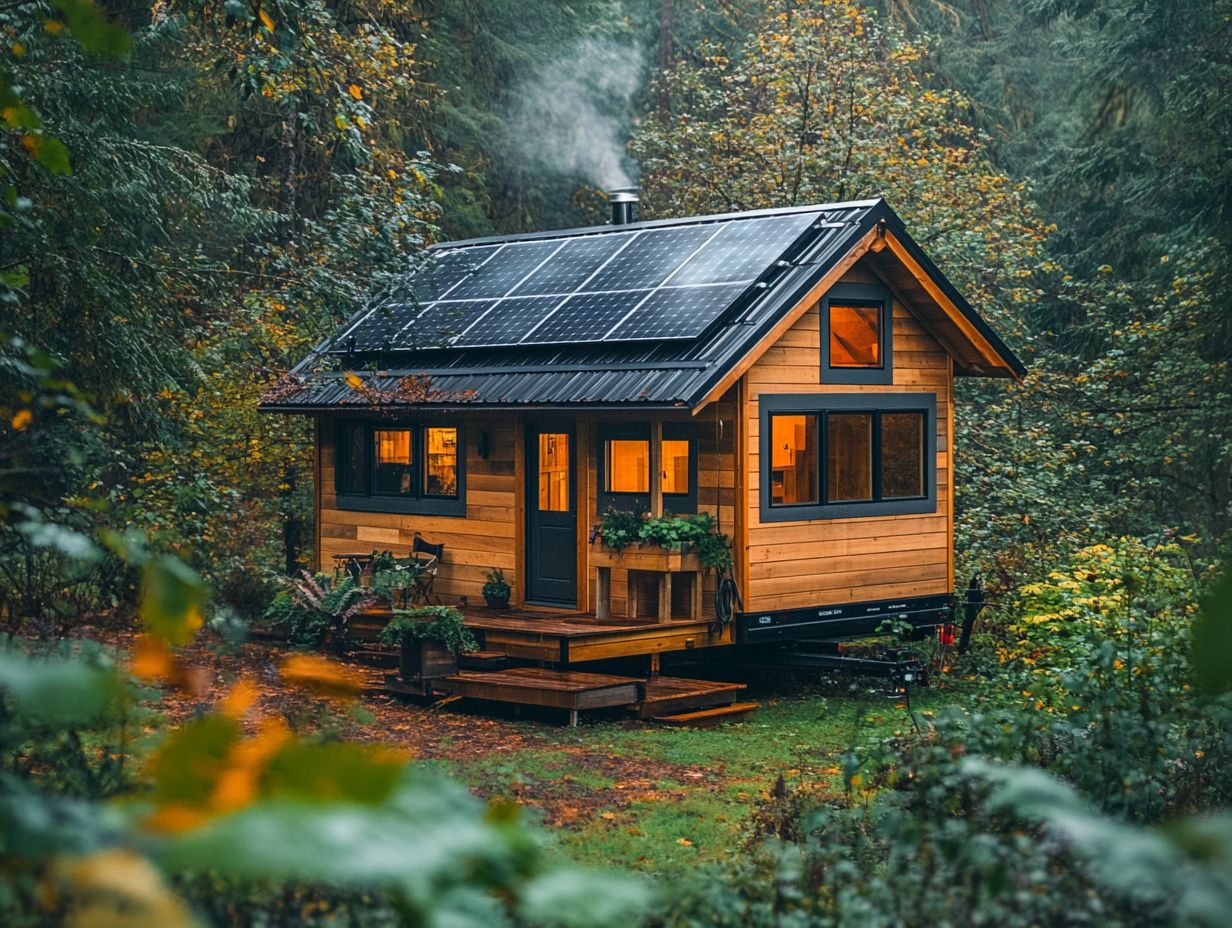
Tiny house living is a lifestyle focused on minimalism and living in a small, compact space. It involves downsizing and simplifying your life to eliminate excess.
To transition to tiny house living, assess your current belongings to determine what is essential. Start downsizing and plan for your new tiny home. Joining a community can also be helpful; check out tiny house community living tips and tricks for valuable insights.
What are the benefits of transitioning to tiny house living?
Imagine enjoying financial freedom, a smaller environmental footprint, and a simpler, more intentional lifestyle. Living in a tiny house allows you to spend more time and resources on experiences and relationships rather than material possessions.
How do I choose the right tiny house for me?
Choosing the right tiny house is a personal decision based on your individual needs. Consider size, layout, location, and budget when selecting a tiny house.
Visiting different models and speaking with other tiny house dwellers can help you understand what will work best for you.
What are some challenges I may face when transitioning to tiny house living?
Transitioning to tiny house living may come with challenges, such as adjusting to a smaller living space and finding suitable locations. Additionally, adapting to a more minimalist lifestyle requires planning.
How do I manage my belongings and storage in a tiny house?
In a tiny house, be intentional about what you bring into your home. Consider multifunctional furniture and storage solutions like hidden compartments and utilizing vertical space.
A storage unit or designated space for infrequently used items may also be beneficial.
Are there any legal considerations when transitioning to tiny house living?
The legality of tiny house living varies by location. Research zoning laws, building codes, and regulations related to tiny houses in your area.
Some places may have restrictions on living in a tiny house full-time, while others may require permits or certifications. Understanding tiny house laws is crucial for a smooth transition to a minimalist lifestyle.

